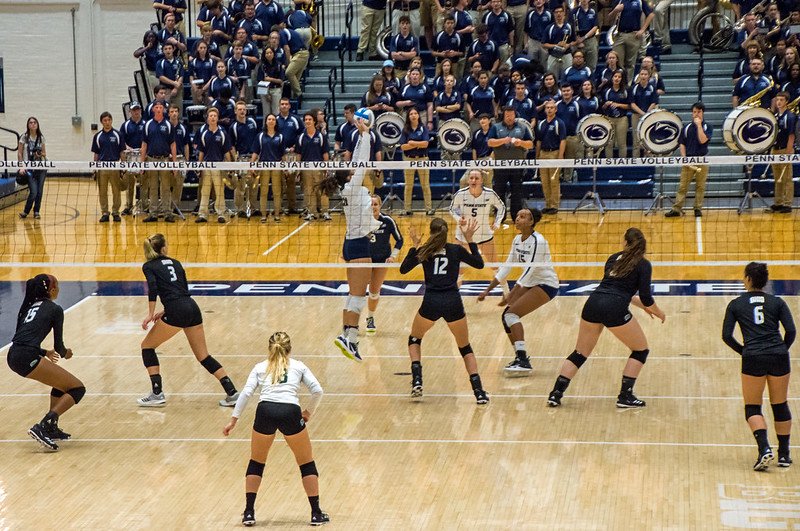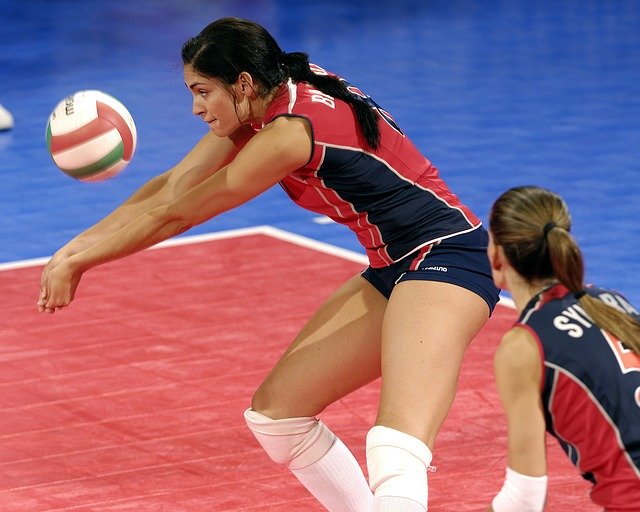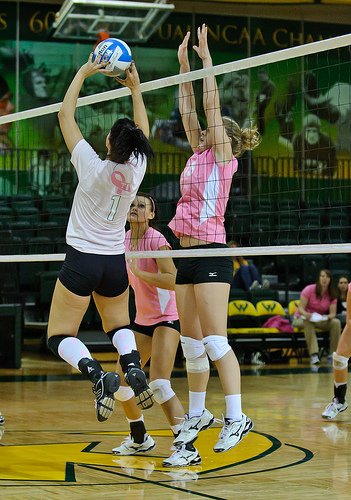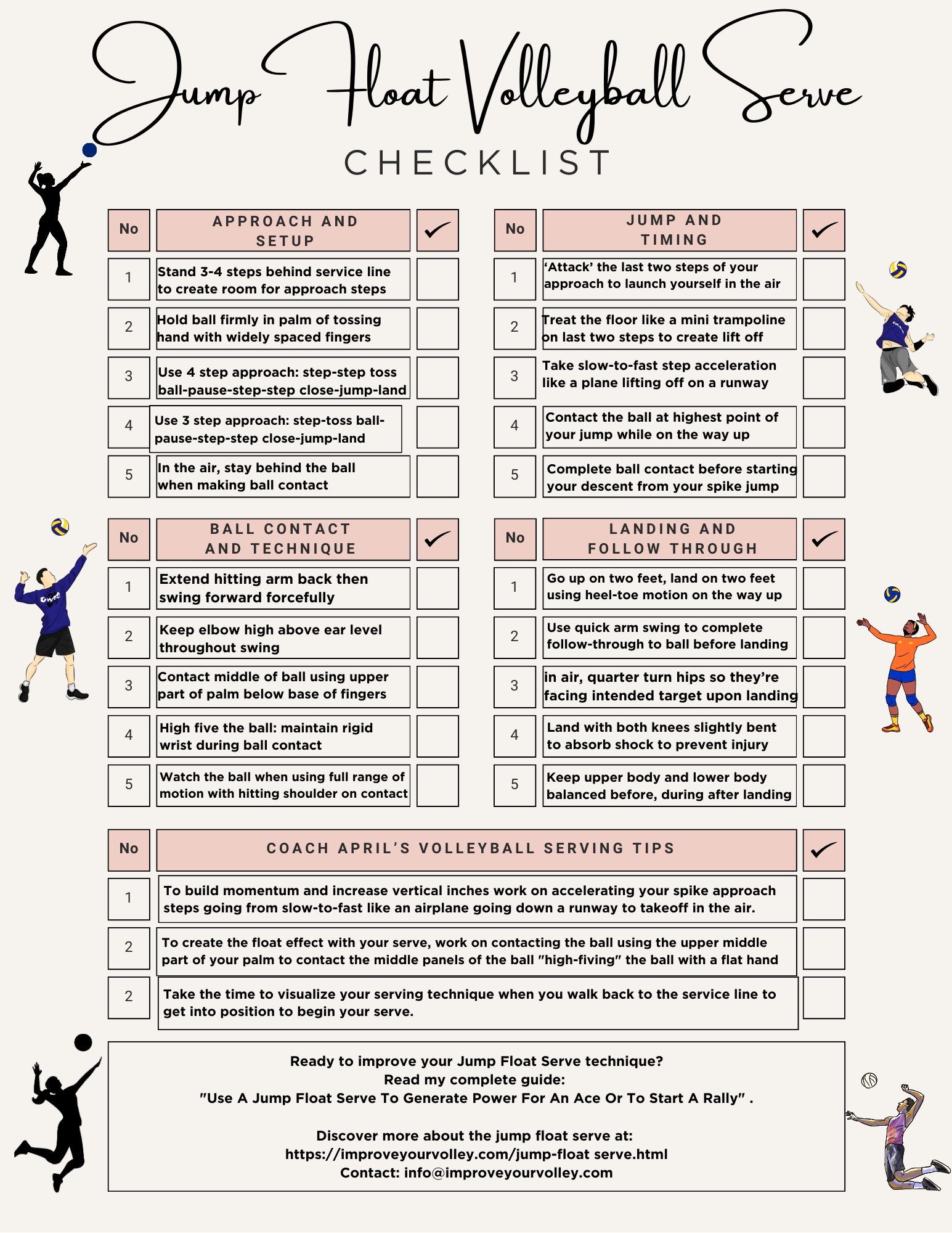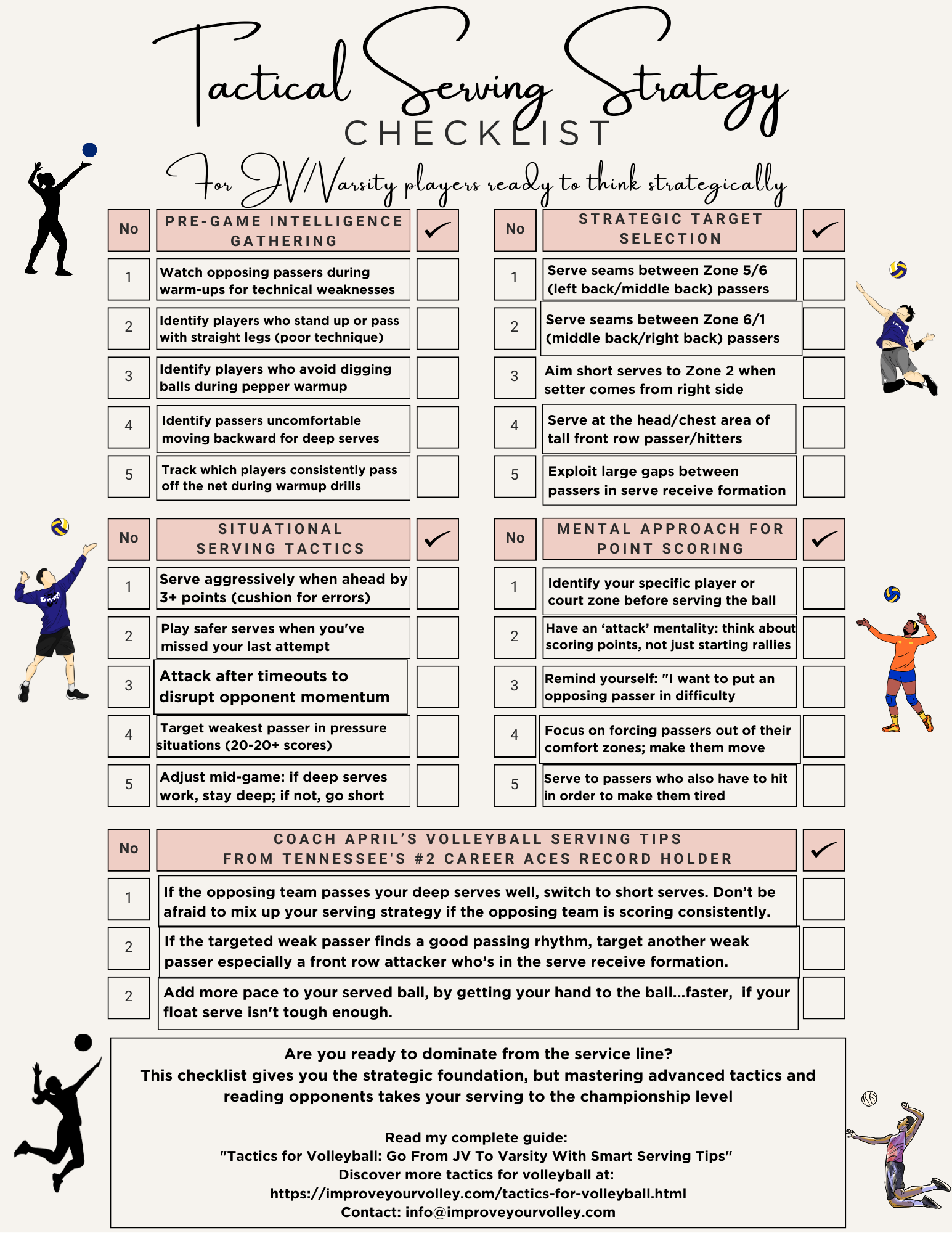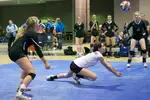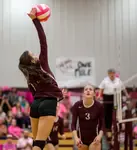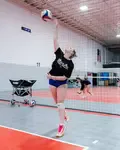The 6 Basic Skills of Volleyball All Varsity Players Should Know
Varsity players know the 6 basic skills of volleyball are serving, passing, setting, blocking, digging and hitting. Serving starts the rally and is the most important skill.
Passing, serving, setting, spiking, blocking and digging are the six basic skills of volleyball which are the first things varsity players need to learn about the sport.
Basic Skills of Volleyball:
The Serve: What does it mean to serve in volleyball?
The volleyball serve is the first opportunity for a player to score a point.
Once the referee blows the whistle to start the rally you have 8 seconds to complete your serve routine and get the ball over the net.
Once you toss the ball in the air you must contact the ball to send it over the net or let the ball drop without touching it again until it hits the floor first.
If you let the ball drop to the floor, the referee will blow the whistle again and this time you have five seconds to serve the ball over the net.
Basic Skills of Volleyball:
Passing: How do you pass a volleyball?
The pass also known as the bump, or the forearm pass is a service reception technique used to contact a ball that's entered your court area when your team is on offense.
Once the opposing team served ball crosses the net onto your side and arrives just above your hip level, you
This creates a platform with both arms that you use to contact the ball deflecting it from your angled platform into the air towards the person most responsible for making the second contact on the ball, your setter or if its the third contact then you send the ball over the net.
Basic Skills of Volleyball:
Setting: What is the set in volleyball?
The set is usually the second contact in a rally and the person who sets the ball the most is called the setter.
The setter on a volleyball team is like a point guard on a basketball team who runs the offense and calls the plays.
Offensive plays consist of a combination of sets called by using hand signals to eligible hitters who hit these sets at different heights, speeds and locations along the net in order to confuse the opposing team's blockers in an effort to score points.
If you are the setter on your team, you determine
- who gets to hit each set
- how high each set will be
- how fast the set will be and
- where along the net or backrow the set will be.
Basic Skills of Volleyball:
Spiking: How do you spike a volleyball?
An attack hit or a spike describes the technique commonly used for the third contact in a rally that sends the ball over the net with power.
A spike starts with a three step or four step approach a player uses to jump off the ground to contact the ball with an armswing while its in the air.
With your spike approach the first two steps are slow and the last two steps are bigger and faster that propel you in the air gathering momentum as you go, to lift you above the top of the net so you contact the ball with an armswing that contacts the ball at its highest height to attack or hit it down into the opposing court.
Basic Skills of Volleyball:
Blocking: How do you block a volleyball?
A block is the first opportunity for a team on defense to keep the team on offense from hitting into their court.
Once the whistle blows and your team serves the ball over the net, your team is on defense, ready to defend your court.
Once the ball is served, the three front row players on the server's side will work together in an attempt to block a player by
- forming a wall with their hands, and arms (and for some who jump high their shoulders)
- that extends over and penetrate's the plane above the net
- in order to stop the opposing team's hitter from spiking the ball into the defensive team's court or to a specific area of the court.
Basic Skills of Volleyball:
Digging: How do you dig a volleyball?
You sink your hips low to the floor, below the ball before it gets to you and you use your extended arms clasped at the wrists to create a platform with your forearms to "dig" or deflect the ball up in the air.
If you are the 'digger" or defender your job is to dig the ball up high enough in the air and ideally to the middle of the court close to the ten foot line, so that the second contact in the rally can be made.
Click to Download Your Jump Float Volleyball Serve Mastery Checklist pdf:
🎯Jump Float Volleyball Serve Mastery Guide - $7
Are you attempting jump float serves but lacking the technical precision that creates consistent power and accuracy? Why Struggle with Jump Float Serves When You Could Master Them Systematically?
You'll Get:
Approach and Setup Methods --Master 3-step and 4-step approaches with optimal spacing and ball positioning
Jump and Timing Techniques -Perfect the slow-to-fast acceleration that creates maximum vertical lift and power
Ball Contact Fundamentals Learn the "high five" contact method for consistent float effect and accuracy
Landing and Follow-through Execute safe two-foot landings with proper hip rotation and shock absorption
Click to Download Your Tactical Serving Strategy Checklist pdf:
🎯Tactical Serving Strategy Checklist Guide - $7
Are you serving without strategic purpose while opponents easily run their offense? Why React to Opponents When You Could Be Controlling Them?
You'll Get:
Pre-game intelligence methods --Identify technical weaknesses and poor passing habits during opponent warm-ups
Strategic target selections Master seam serving and zone targeting that creates immediate passing problems
Situational serving tactics Know when to serve aggressively vs. safely based on score and game situation
Mental approach strategies Develop point-scoring mentality and force passers out of comfort zones
Coach April's tactical tips Adjust serving strategy mid-game and target front-row hitters effectively
1-page PDF checklist Convenient format you can print or keep on your device for strategic reference
Click to Download Your Consistent Toss Mastery Checklist pdf:
🎯Consistent Toss Mastery Guide - $7
Are inconsistent tosses sabotaging your serves and forcing you to chase the ball? Why fight your toss when you could master the foundation of every great serve?
Basic Skills of Volleyball
Where Do I Go From Here?
If your athlete struggles with consistent serve receive, gets subbed out, or is overlooked for playing time—this is the fix you’ve been looking for.

Struggling with passing consistency?
I help talented passers tired of getting pulled from games because of inconsistent serve receive skills BUILD passing confidence without expensive private lessons using the same 3-step system that's helped dozens of my athletes get recruited.
Download my eBook for $17.99 and start building the passing confidence that keeps you on the court—and gets you seen by college coaches.
From Lady Vol to Legend: Coach April Produces Powerful Passionate Players...is that you?
What Are You Looking For?
Click to Download Your Pre Serving Ritual Mastery Checklist pdf:
🎯Volleyball Pre Serving Ritual Guide -
Players! Learn How To Transform Your Serve from Weak to Weapon
Click to Download Your Parent's Volleyball Serving Checklist pdf
🎯Parent's Volleyball Serving Checklist Guide
Parents! Help Your Player Develop Championship Serves (Even If You've Never Played)

Hi there!
Thanks for stopping by. Hope you learned something today that will help you reach your volleyball goals.
Be sure to subscribe to my email newsletter so you can learn more each week!
Stay strong! Stay motivated!
-Coach April

SUSCRIBE to my email newsletter below!
 Click to learn more about the weekly volleyball classes and clinics or email info@imrpoveyourvolley.com for information
Click to learn more about the weekly volleyball classes and clinics or email info@imrpoveyourvolley.com for informationCongratulations to my seven Boys-18s Vegas Volley club players who played in two state championship finals yesterday, the 3A and 5A State champinship finals at Sunrise Mountain High School.
TOURNAMENT CHAMPIONS!
A-1 Vegas Volley VBC
In It To Win It Tournament
May 2 - 4, 2025 Tournament
Gold Medalists
18s Premier Division
Vegas Volleyball's Unsung Heroes: Celebrating Moms with Peace Love Volleyball Shirts
Ready to energize your volleyball mom journey?
Subscribe to my 'Producing Powerful Passionate Peaceful Players' email list above on ImproveYourVolley.com.
You'll receive energy-boosting tips, exclusive insights from me, Coach April Chapple on maintaining momentum in volleyball.
Let's power up the Vegas volleyball scene together!
Recent Articles
-
Volleyball Topspin Serve: How To Score Aces With Power and Spin
Dec 31, 25 05:41 PM
Want to add 3-5 aces per game? The volleyball topspin serve combines power and spin to score points. Learn the technique that makes passers fear your serve. -
Three Volleyball Serve Types Players Use To Score More Aces Each Game
Dec 31, 25 05:39 PM
Learn 3 volleyball serve types that win games. Could adding 3-5 aces per set make you a starter? Learn standing float, topspin & jump float 'How to" techniques -
5 Tips On How To Unleash The Power Of Your Overhand Volleyball Serve
Dec 31, 25 05:37 PM
I reveal some of the secrets to perfecting your overhand volleyball serve, from proper form and serving rituals to various serve types and practice methods.
